
Interactive Soundart Projects
___Calling the Glacier________________________________Exhibitions
Exhibitions, Conferences, Installations etc.
Sound Walk Vent, Austria, in the discharge area of the Vernagt Ferner Glacier, 2011.
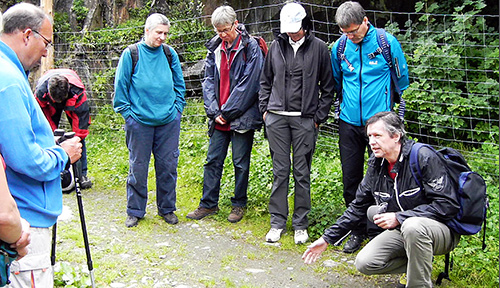
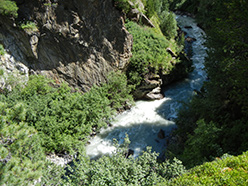
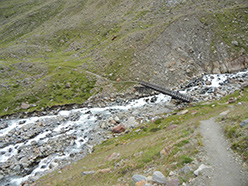
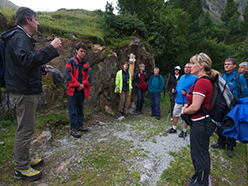
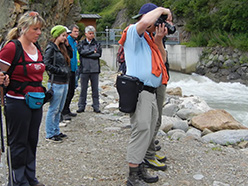
From civilization to nature and back. A sound walk and acoustic tour by Kalle Aldis Laar in and around Vent, Austria.
The conscious perception of our living environment is dominated by the diverse visual impressions that constantly affect us. In the western world we learn automatically how to deal with these stimuli, to channel them, to evaluate them, possibly, even not to trust them.
Our sound world, on the other hand, remains largely in the unconscious. If not addressed directly, as music, conversation or signals, we are largely passive towards our acoustic environment and remain exposed to the noises without having learned to deal with them in a similar way as with photos or films.
The sound walk led from the village of Vent to points of early Stone Age civilization in the natural environment and back again, from the alpine pasture to the church. Part of the tour were a few short lectures and joint exercises on sound and perception, based on distinctive points in the landscape and taking advantage of specific listening experiences at these locations. For example, the acoustic 'observation' of a raging brook made it possible to understand how our brain creates continuity and combines individual events into a whole.
On the ascent towards the Martin-Busch-Hütte, various echo perceptions were analyzed and the assertiveness of certain sounds was experienced and explained. A highlight was the visit to the so-called 'Hohler Stein' ('Hollow Stone'), located on the ascent to the Hörnle mountain. This resting place for Stone Age hunters offers impressive views of the surrounding area with a few waterfalls on the opposite slope several kilometers away. The main aim here was to experience the temporality of sound.
A visit to the church in Vent concluded the walk, it served as a representative of civilization and an almost urban architecture. The participants were asked for example, why do we usually remain silent when entering large, empty (and not just sacred) spaces? Based on an analysis of the church construction, the handling of acoustics in modern times was explained, not without noticing the role of sound design in modern daily life products. The acoustic guidance with the joint exercises and experiences helped to reawaken one part of their perception that was lost in the noise of our daily life.